Leonardo's Last Supper: A Vision by Peter Greenaway
The Park Avenue Armory, built between 1877 and 1881, has become, in recent years, a unique and prestigious performing arts center. By New York standards it is unusual, to say the least: it stands out architecturally as a giant Gothic Revival fortress situated right on Park Avenue, across the street from the Italian consulate and cultural institute, and its 55,000-square-foot drill hall is one of the largest unobstructed indoor spaces in the city; it also boasts an 85-foot-high barrel-vault ceiling. In a city so dense with buildings and population, where artistic spaces are constantly split to allow more simultaneous events, such an open space is a precious luxury that has allowed the Armory to host, since 2007, an astounding array of logistically challenging artistic enterprises, including Christian Boltanski’s No Man’s Land, Ariane Mnouchkine’s Les Éphémères, Declan Donnellan’s Boris Godunov, and the epic opera Die Soldaten.
On the morning of December 1, the Armory’s president and executive producer, Rebecca Robertson, held a press conference to announce the 2011 season and to offer the media a first look at British director Peter Greenaway’s multi-media presentation of Leonardo’s Last Supper (on view December 3, 2010 – January 6, 2011). This is just one piece in a complex ongoing project entitled Ten Classic Paintings Revisited (although there were only nine until recently), in which the artist has set out to create what he calls a “dialogue” between 8,000 years of painting and 115 years of cinema. Greenaway, who was present at the press conference, explained his belief that human civilization began and will end with painting, or – more specifically – that the first mark ever laid down by mankind must have been a painting, and that the last one will be as well. Widely known as a film director, Greenaway actually started out as a painter and can boast deep practical and theoretical knowledge of the subject, including the many legends that surround certain works of art, as expressed in his documentaries Rembrandt’s J’Accuse (2008) and The Marriage (2009), which revolve respectively around Rembrandt’s painting The Nightwatch of 1642 and Veronese’s The Wedding at Cana of 1563. Together with Leonardo's famous work, these three are the first classic paintings to have already been “greenawayed.” For the record, the other seven paintings will be Raphael’s 1504 Wedding of the Virgin, Picasso’s 1936 Guernica, Velazquez’s 1636 Las Meninas, Monet’s 1920 Water Lilies, Seurat’s 1884 La Grande Jatte, Pollock’s 1950 One:Number 31, and, recently added, Michelangelo’s 1541 Last Judgment from the Sistine Chapel in the Vatican in Rome.
Greenaway was born in Wales in 1942, while his parents were there avoiding the London Blitz, and was educated in London. He has been making films since 1966 and is better known for The Draughtsman’s Contract (1982); The Cook, The Thief, His Wife & Her Lover (1989); The Pillow Book (1996) and The Tulse Luper Suitcases (2003). He lives in Amsterdam in a building that directly faces the Rijksmuseum. Being able to visit the museum as much as he wishes, he has developed over the years a very strong relationship with Rembrandt’s Nightwatch, the colossal canvas from 1642, and the most famous painting in the collection. In 2006 he obtained permission to create an “exploration” of the painting, by projecting lights on the actual canvas, thereby defining the method that can be seen today at the Armory. Technically, this practice involves a detailed mapping of the painting - in other words, a digital database that can allow a light to be focused on the tiniest detail while the rest of the painting remains in complete shadow. This technique allows the spectator to see days going by, shadows moving; it accentuates the three-dimensional perception of the perspective and allows Greenaway to convey a story that is accompanied by sounds and other images projected around the room.
Although a common technique has been applied to all of them, the three paintings have been approached in very different ways. There are 34 figures in Rembrandt’s masterpiece, which, Greenaway suggests, is an allegory for a conspiracy within the musketeer regiment of Frans Banning Cocq and Willem van Ruytenburch in which each character plays an important role. He expanded on this theory in his feature film Nightwatching as well as in his documentary Rembrandt’s J’Accuse, respectively from 2007 and 2008. His work in Amsterdam, though, was relatively less elaborate. Coinciding with the celebrations for Rembrandt’s 400th birthday (2006), the canvas was placed in a separate room in which the museum’s lights would go down every seven minutes and special lights would be projected to enhance its composition.
It was in 2008 that Greenaway was allowed to stage a one-night-only event before a select audience in front of the original Last Supper in the refectory of Santa Maria delle Grazie in Milan.
This is basically the main course of the three-part meal that was brought to New York, and it features a double-loop presentation revolving especially around the curious sources of light that the Tuscan painter conceived in 1498. According to Milan’s Superintendent for Architectural and Natural Heritage, Alberto Artioli, “Light is the primary instrument for every painter, but Leonardo here presents us with an unbeatable accomplishment by painting two sources of light. In the background, the sunset still sends forth its vivid rays, and the imminent evening is announced with the gradation of celestial blue tones. Light also has a highly symbolic value as it shines directly over Jesus, who sits against the light at the center of the scene. But yet another light source, this time outside the scene, shines upon the characters as though coming from the window on the refectory wall; Judas is the only character being overshadowed, denied by the light, which therefore performs not only as a pictorial element but as a theatrical feature”.
Greenaway perfectly represents these light sources and gives them movement through time, but in this case, unlike the other two paintings, the treat lies not in the illusory spectacle but in being able to see the details of this deteriorated masterpiece as never before. Considering the distance one has to keep from the original Leonardo painting, and the crumbling wall it is painted on, it is actually quite difficult to capture the many pictorial feats accomplished by the painter in this single work. By highlighting certain elements at a time, and by outlining them against their backgrounds, Greenaway takes us to an undiscovered realm and places us in the middle of it, also with the aid of an actual long, narrow table set like the one in the painting.
Fortunately, The Last Supper cannot be moved from Milan, so Greenaway has worked with the Director and Founder of Factum Arte, Adam Lowe, to create an exact, three-dimensional replica of the original masterpiece. In Lowe’s words, “We have developed pioneering technologies that allow us to reproduce absolutely exact two- and three-dimensional copies of any give artwork. […] For The Last Supper, we used high resolution photographic data recorded using a panoramic process by the Italian company Haltadefinizione – through the use of a panoramic procedure with thousands of shots – together with the data of the 3D scan made by the Central Institute for Restoration. The following phase was color matching: we examined hues, tone and character of the color for every single part of the painting. Subsequently, we worked out collectively how to treat this huge amount of data: we wanted to reproduce the complexity of the surface to preserve variations and imperfections. The Last stage consisted in making the surface in the same materials as the original and printing the image using a purpose-built printer that enables us to overprint in perfect registration. The final phase of the work goes back to the hands of expert restorers so that our clone can recreate the emotional impact that is often prevented by the inaccessibility of the original”. The resulting experience is the main, central course of a three-course meal, preceded by a Prologue and followed by an Epilogue.
The Prologue, which takes place in a sort of antechamber to the recreated refectory, is an example of “architectural cinema,” which was first created as an installation in the Italian pavilion at the 2010 World Expo in Shanghai. The audience, standing, is surrounded by many screens that show, one after another, the most famous Italian historic architectural landmarks, such as Pompeii, Florence, Venice, and ancient and post-war Rome, while little excerpts from famous pieces of Italian music (from Vivaldi to Rossini to Verdi to Nino Rota) blast in the background. Cliché.
The spectators are then herded into the “refectory”, where they must wait for the main course to begin. The most exciting part of the whole event was Greenaway himself standing next to the table and telling us, in his beautiful, dramatic British accent, about the objects present at the meal and the theory according to which the table was set as a geocentric view of the Universe (including the planet Pluto, which wasn’t discovered until four centuries later). Then the lights go down and the two loops go by; this allows the spectator to miss nothing that is projected onto the work and to observe the images of the actual tempera on plaster, digitally recreated on a screen on the opposite wall, in place of the crucifixion fresco by Giovanni Donato da Montorfano, which is not recreated in the display.
Finally, the audience is once again herded back into the antechamber, where an excerpt from Greenaway’s work on Veronese’s Wedding at Cana - including some new material narrated by the director himself – is on view. This is much less spectacular, because everything, including the painting, is projected. (Actually, the original show of Veronese’s huge canvas is more interesting, if less enlightening, than The Last Supper. I happened to be in Venice in 2009 at the same time as the opening of Greenaway’s Nozze di Cana; I was lucky enough to see it and was very impressed both by the technical aspect – it included several moments of the day, a city on fire in the background, as well as a thunderstorm – and by the narration. Greenaway found a purpose for each of the 126 characters who were present for one reason or another at the wedding banquet, during which, Christians believe, Jesus performed his first miracle.)
As compared with the Wedding show, the Last Supper display seemed lacking in narrative structure, especially since Greenaway’s motive was to find a way to combine painting and cinema. More artistically satisfying attempts at this pairing can be found in Pasolini’s La Ricotta (1963) and Godard’s Passion (1982), in both of which real-life actors are seen trying to recreate paintings. In the former, the actor posing as Christ actually dies of indigestion while on the cross, and the latter is interesting because the actors are recreating Rembrandt’s Nightwatch, as in Greenaway’s Nightwatching.
So in the end what is Leonardo’s Last Supper: A Vision by Peter Greenaway? Is it art or just technique? There is no doubt about how “cool” this project is. Greenaway himself explained that it is aimed especially at the ”laptop generation,” at those who believe that “there was no painting before Pollock and no cinema before Tarantino,” and I strongly recommend it.. But will it last? Will people 50 years from now go to see it as they surely will go to see Greenaway’s movies? Or will future technology dispel what today seems so spectacular? I believe that the second option is more probable, but my admiration for this artist and his legacy leads me to hope that I will be proven wrong.



































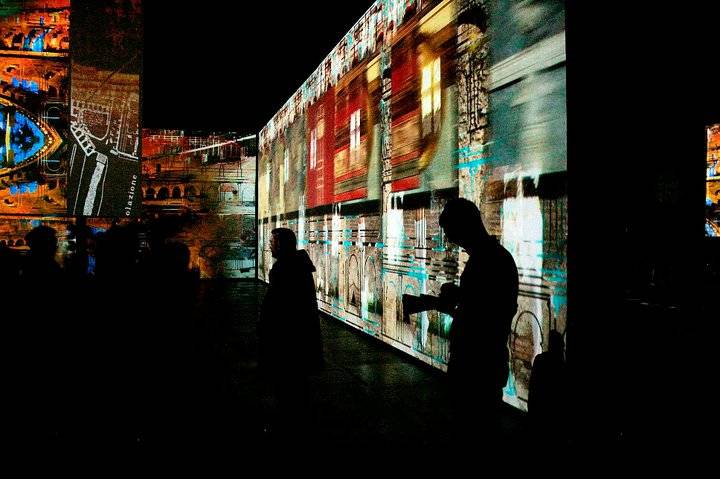
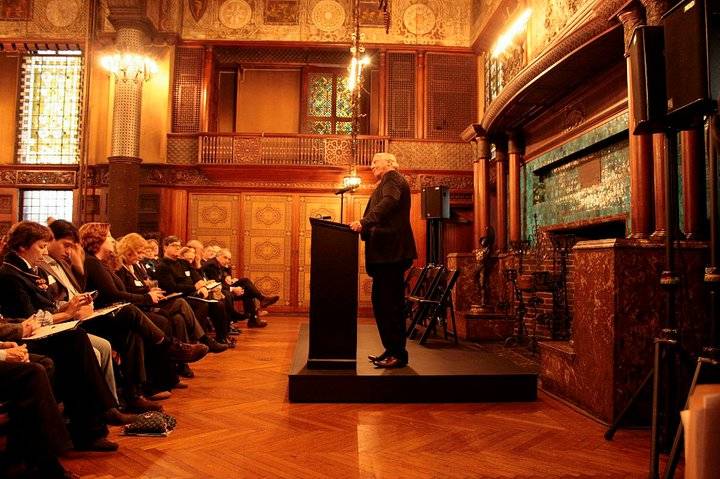

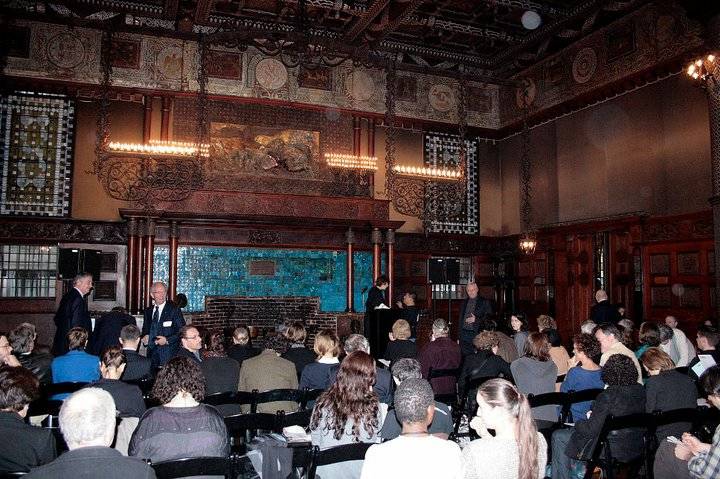
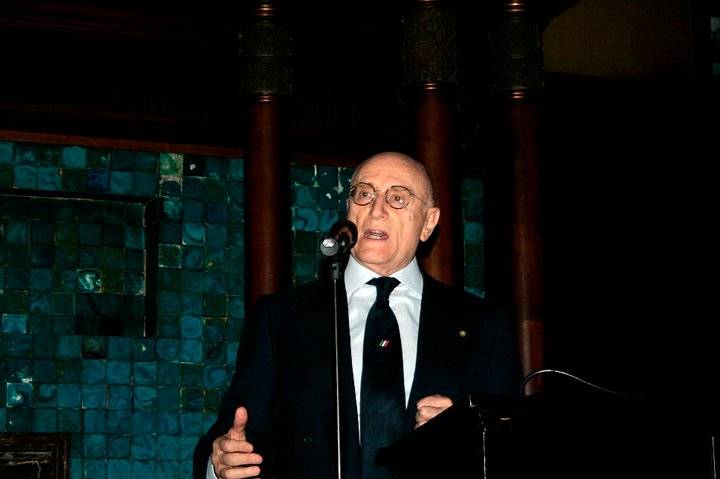



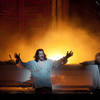
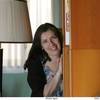
i-Italy
Facebook
Google+
This work may not be reproduced, in whole or in part, without prior written permission.
Questo lavoro non può essere riprodotto, in tutto o in parte, senza permesso scritto.